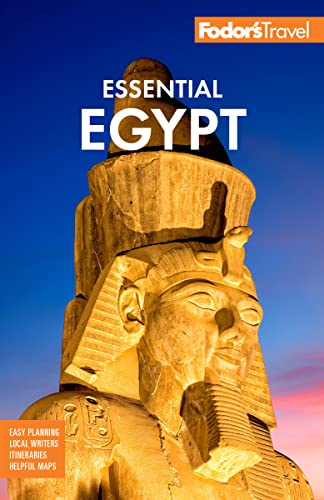Itineraries: The Classic Tour of Egypt
7 Days
This weeklong itinerary is the whistle-stop tour of all whistle-stop tours, but it will give you the opportunity to see the most important locations relating to ancient Egypt in a limited period of time. Your days will be very full, but who wants to miss even one of these sites? If you are coming from the United States, remember to figure in the travel time (more than 10 hours from New York), so this tour actually requires nine full days away from home.
Cairo
1 Day. Hit the ground running with an action-packed day. In the morning visit the Egyptian Museum, whose hallowed halls have the largest collection of artifacts of the Pharaonic era. The signage in this museum is abysmal, so you'll be at an advantage if you bring along a guide (or hire one once you arrive at the museum). Have lunch, either around the museum or in Giza, on the outskirts of the city. Then, in the afternoon, explore the mysteries of the Great Pyramids and the Sphinx.
Memphis, Dahshur, and Saqqara
1 Day. Take a day to see these three Old and Middle Kingdom sites from your base in Cairo. Memphis was the first capital of Egypt, but there's little grandeur left on the ground. Saqqara is famous as the site of the first pyramid ever built, while Dahshur has five pyramids, including the Red Pyramid and the Bent Pyramid. Of the three areas, Dahshur is the less visited, and if you time your visit well, you may not encounter large crowds.
Abu Simbel and Aswan
1 Day. In the early morning, fly south from Cairo to Abu Simbel, site of two monumental temples commissioned by Ramses II. As you head south along the Nile, you'll be able to see Lake Nasser as it snakes through the desert south of Aswan. A round-trip shuttle bus to the Temple of Ramses II is included in the price of your airline ticket; flights are carefully timed (they leave Cairo very early, arriving at Aswan around 9:30 am) and will allow you just a couple of hours to view the temple. The colossal statues fronting the Great Temple are among the most photographed sites in the world, and rightly so, having been rescued through a heroic effort from the rising waters of Lake Nasser in the 1970s. Then fly to Aswan, which will get you to your hotel or cruise ship around lunchtime. In the afternoon tour the unfinished obelisk, Aswan High Dam, and Philae. Return to Philae in the evening for the Sound & Light show (depending on day and languages broadcast).
Kom Ombo
½ Day. The Ptolemaic Temple of Haroeris and Sobek combines the worship of two gods: the crocodile-headed Sobek, protector of the earth, and Haroeris, a hawk-headed manifestation of Horus and god of medicine. The temple was also an ancient center for medicine and healing. If you are on a cruise, you'll probably arrive at the temple around sunset; if you are visiting on a day trip from Aswan, try to go in the morning to avoid the crowds disembarking from the dozens of ships in the afternoon.
Edfu
½ Day. The Temple of Horus was built in the Ptolemaic era and completed in only 180 years; this is the best-preserved temple on the Nile. On a cruise, you'll arrive in Edfu in the morning. You must take some kind of transportation from the cruise docks to the temple. The traditional method is by horse and carriage, but you can also take a taxi.
Luxor
2 Days. You have much to see in Luxor, on both sides of the river. Split your two days into a West-Bank day and an East-Bank day. Devote Day 1 to the West Bank, spending the morning at the Valley of the Kings; have lunch, then tour Madinat Habu, the Valley of the Nobles, the Ramesseum, and the Colossi of Memnon. Tour the East Bank on Day 2, hitting the sprawling Karnak Temple in the morning, then after lunch visit Luxor Temple, returning to Karnak for the Sound & Light show in the evening.
Dendera and Luxor
1 Day. One significant temple is on few one-week itineraries (and almost no cruise itineraries), but if you want to get a little off the beaten path, then book a tour to visit the Temple of Hathor at Dendera, 40 km (25 miles) north of Luxor, especially noted for its Greco-Roman depictions of Queen Cleopatra presenting her son and heir Caesarion to the Egyptian gods. Return to Luxor, and shop in the souk for souvenirs on your final afternoon.




